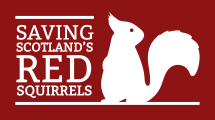…Overall responsibility for this policy and its implementation lies with the Scottish Wildlife Trust Chief Executive. Information Commissioner’s Office For further assistance with complaints regarding your data, please contact the Information Commissioner’s Office, whose remit covers the UK. Wycliffe House, Water Lane, Wilmslow SK9 5AF Telephone: 0303 123 1113 Email: casework@ico.org.uk 9. Leaving our website We are not responsible for… […]
Read More…
Scotland’s Red Squirrels Red squirrels are one of Scotland’s most loved animals, and they are our only native squirrel species. Red squirrels were once widespread throughout the country. There are still many places you could encounter one today, from the conifer forests of Galloway, to the Atlantic hazel woodlands of Argyll, to the country estates of Tayside or the Caledonian… […]
Read More…
…can move and adapt. 30 by 30 – the plan to increase the area of land that is protected or managed for nature to 30% by 2030. Nature Targets – the plan to set legal targets for nature that the government has to meet. National Parks – the plan to designate at least one new National Park in Scotland by… […]
Read More…
…Wildlife Trust volunteer sign-up processes. Please email squirrels@scottishwildlifetrust.org.uk. Please note SSRS will no longer be able to provide any of the financial support that was available during the Developing Community Action and Transition phases. Fundraising guidance and support is available via the Resources page on the Hub, and through the Forum via the ‘Offers and Needs’ chart. Will SSRS… […]
Read More…
…ambitious aim of the 5-Year ‘Developing Community Action’ phase and the 2-year ‘Transition’ phase was to set up and equip a network of volunteer groups in South Scotland capable of independently taking forward red squirrel conservation in the region, with the help of some central SSRS co-ordination. We have been amazed at the success of the 17 volunteer red squirrel… […]
Read More…
…the national strategy for red squirrel conservation in Scotland, based on the findings of the report and success of the SSRS programme to date. Full details of the successes of the project are outlined in the report. Key highlights of the Scottish public’s contributions to red squirrel conservation include: By the end of the DCA phase 18 volunteer led groups… […]
Read More…
…squirrels were still absent from much of their former range across the north-western highlands. Trees for Life aims to create 14 new reintroduced populations of red squirrels in the area, with 10 of these already carried out and doing well. It is aimed that by the end of the project, all possible suitable sites for reintroductions will have had red… […]
Read More…
…with only around 287,000 remaining, about 80% of which are estimated to be in Scotland. The greatest threat to the red squirrel’s future in Scotland is the invasive non-native grey squirrel. First introduced in Victorian times, the larger and more robust grey squirrel out-competes reds for food and living space, making it difficult for them to successfully breed and for… […]
Read More…
…team and she also works closely with the Tayside Conservation Officer and Grey Squirrel Officers. Contact: ymcmurchie @scottishwildlifetrust.org.uk Katie Berry: Communications & Engagement Officer Katie began her squirrel journey as the SSRS Administrator, joining the team in March 2020, just before the first covid-19 lockdown. In November 2022 she became the Communications & Engagement Officer for the team,… […]
Read More…
…Scotland continues to provide a home for the bulk of the country’s red squirrels, which still occurs as the sole species of squirrel over highland Scotland. Happily, the sightings also show that the native species still occupies a large area in the south of Scotland, although here they share the landscape with grey squirrels. The largest concentration of squirrel reports… […]
Read More…
